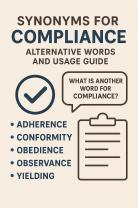Is it correct to put two frequency adverbs together?
In English, it is generally not common or idiomatic to use two frequency adverbs together in the same sentence. Frequency adverbs, which indicate how often an action occurs, typically convey a specific degree of regularity, and combining them may result in redundancy or confusion. However, there are a few exceptions where the combination may be appropriate for emphasis or specific contexts.
Common Single Frequency Adverbs:
- Always
- Usually
- Often
- Sometimes
- Rarely
- Hardly ever
- Never
Examples of Single Frequency Adverbs:
- She always arrives on time.
- They usually go for a walk in the evening.
- I often eat lunch at my desk.
- Sometimes, I prefer to work in silence.
- He rarely complains about anything.
- Hardly ever do we see such a beautiful sunset.
- I never miss my morning coffee.
Possible Exception: Emphatic Use
In certain cases, combining frequency adverbs might be used for emphasis or to convey a specific meaning. For instance:
- I almost always take the bus to work. (Emphasizing the high frequency, with a slight exception.)
- She practically never eats dessert. (Emphasizing the rarity of the action.)
Caution:
While the exceptions mentioned above are possible, it's essential to exercise caution and consider whether the combined adverbs add clarity or emphasis to the sentence. In most cases, using a single frequency adverb suffices to convey the intended meaning without introducing unnecessary complexity.
Incorrect Examples:
- She always usually arrives on time. (awkward)
- They rarely often go for a walk. (confusing)
- I sometimes usually eat lunch at my desk. (unclear)
Preferred Correction:
- She usually arrives on time.
- They rarely go for a walk.
- I usually eat lunch at my desk.
In summary, it's generally more effective and grammatically correct to use a single frequency adverb in a sentence. If you find yourself tempted to combine them, consider whether doing so adds clarity or emphasis, and ensure that the result does not create confusion or sound awkward.
Can frequency adverbs be correctly used together?
Yes, frequency adverbs can be correctly used together in certain contexts. The key is to ensure that the combination of adverbs adds clarity and precision to the meaning of the sentence.
Here are some examples of how frequency adverbs can be used together effectively:
"I always usually go to the gym on Mondays and Wednesdays." This sentence uses the adverbs "always" and "usually" to emphasize the regularity of the gym routine.
"They sometimes rarely come to parties." This sentence uses the adverbs "sometimes" and "rarely" to convey the infrequency of the party attendance.
"She never always finishes her homework on time." This sentence uses the adverbs "never" and "always" to highlight the contradiction in the person's work habits.
When using frequency adverbs together, it's important to consider the order of the adverbs. Generally, the adverb that conveys the more specific or emphasized frequency should be placed closer to the verb.
Here's a general order of frequency adverbs from most frequent to least frequent:
- Always
- Usually
- Often
- Sometimes
- Occasionally
- Rarely
- Never
By following these guidelines, you can effectively use frequency adverbs together to enhance the clarity and precision of your communication.













